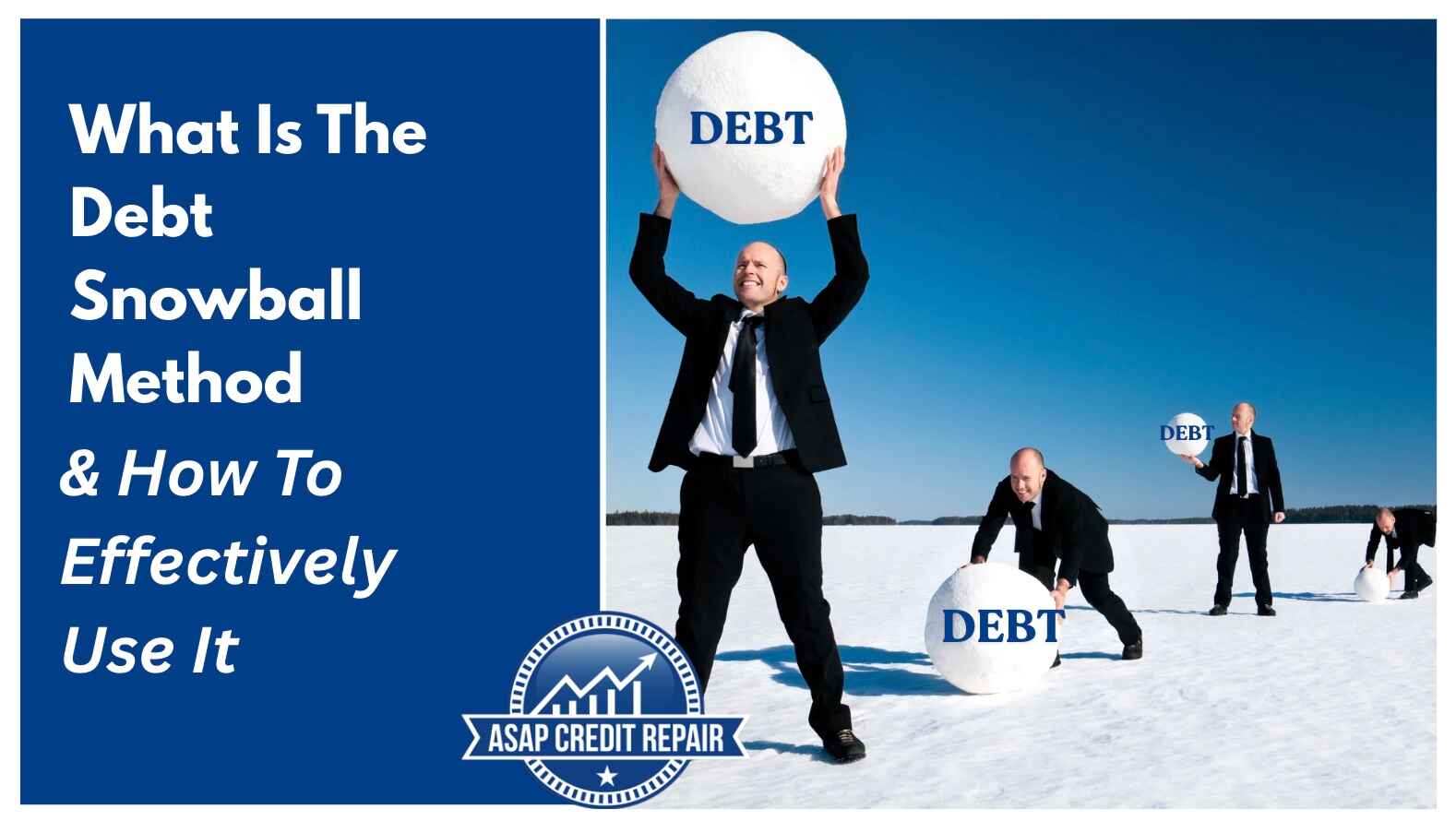The debt snowball method is a strategy where you pay off your smallest debts first while making minimum payments on larger ones, gaining momentum as each small balance is cleared. To use it effectively, list your debts from smallest to largest and focus on eliminating the smallest first to build motivation and progress.
Listen up, debt warriors, if you're drowning in credit card bills and feeling like you'll never escape the payment trap, the debt snowball method might just be your financial superhero origin story. This isn't just another boring debt repayment strategy that'll put you to sleep faster than a financial advisor's PowerPoint. This is the real deal that's helped millions of people transform from debt slaves to financial freedom fighters.
Forget everything you think you know about paying off debt. The debt snowball approach flips traditional wisdom on its head and actually works because it taps into something most financial gurus ignore – human psychology. Yeah, you saw it right, psychology, the way people think and behave!
The Debt Snowball Method: Your New Financial Superpower
Picture this: instead of trying to tackle your biggest, scariest debt first (looking at you, credit card with the soul-crushing balance), you start small. Really small. The debt snowball method is a debt reduction strategy where you attack your smallest balance first while making minimum payments on everything else. Once that baby debt is eliminated, you roll that entire payment into your next smallest debt – creating a snowball effect that grows more powerful with each victory.
This debt payoff strategy isn't just about numbers on paper. It's about rewiring your brain for success and building unstoppable momentum that'll carry you all the way to debt freedom.
How To Execute The Perfect Debt Snowball Strategy
Step 1: Face Your Financial Reality (No Hiding!)
Time for some brutal honesty. List every single debt you owe – credit cards, personal loans, car payments, student loans – from smallest balance to largest. Notice we said balance, not interest rate. This is where the debt snowball method differs from the debt avalanche approach, and trust us, there's genius in this madness.
Step 2: Master Your Minimum Payments
Make those minimum payments on every debt religiously. Miss these and you'll face late fees, penalty rates, and credit score damage that'll haunt you longer than your worst dating mistakes.
Step 3: Find Your Extra Firepower
Here's where the magic happens. Scrape together every extra penny you can find for your smallest debt. Cancel that streaming service you forgot you had, meal prep instead of ordering takeout, sell stuff you don't need – whatever it takes to boost your debt elimination power.
Step 4: Create The Snowball Effect
When you completely annihilate that first debt (and you will!), don't you dare spend that money on celebration drinks. Roll that entire payment amount into your next smallest debt. This is how your debt snowball grows from a tiny financial pebble into a debt-crushing avalanche.
Step 5: Rinse, Repeat, And Dominate
Keep rolling those payments forward until every last debt is history. Your final payments will be massive, making quick work of even your largest balances.
Why Psychology Beats Pure Math Every Single Time
Here's where financial traditionalists get their calculators in a twist. The debt avalanche method – paying highest interest rates first – might save you money on paper, but it often fails spectacularly in real life. Why? Because personal finance is way more personal than it is finance.
Research from Northwestern University's Kellogg School of Management proves what debt snowball champions have known all along: "consumers who tackle small balances first are likely to eliminate their overall debt" compared to those using the debt avalanche approach. Harvard Business Review research backs this up, confirming that prioritizing smaller balances proves most effective for debt elimination success.
The debt snowball method works because it feeds your brain exactly what it craves – quick wins and proof that you're not destined to be broke forever. Each eliminated debt becomes a confidence booster that fuels your motivation for the longer journey ahead. It's like leveling up in a video game, but the prize is financial freedom instead of digital coins.
Real People, Real Results: Debt Snowball Success Stories
Sarah's Credit Card Comeback
Sarah was juggling four debts: an $800 store card (22% APR), a $2,200 personal loan (12% APR), a $3,500 credit card (18% APR), and a $6,000 car loan (8% APR). Her monthly minimums ate up $320, but she found an extra $200 for debt elimination.
Following the debt snowball strategy, Sarah demolished that $800 store card in just over three months by throwing $250 at it monthly. The psychological high from that first victory motivated her to find even more money through meal planning and subscription audits. She became completely debt-free 18 months faster than if she'd stuck to minimum payments alone.
Mike and Jennifer's Debt Demolition Partnership
This power couple faced $45,000 across seven different accounts. They initially tried the debt avalanche method but quit after six months because progress felt slower than watching paint dry.
Switching to the debt snowball approach changed everything. They eliminated three small debts in four months, freeing up $180 in minimum payments. Each victory strengthened their partnership and renewed their commitment. They celebrated every debt elimination together, turning debt payoff into a team sport that brought them closer while building wealth.
Next-Level Debt Snowball Hacks Most People Miss
The Smart Hybrid Strategy
Pure debt snowball purists might hate this, but there's room for strategic thinking. If two debts are within $500-1000 of each other, but one carries significantly higher interest (think 24% versus 12%), consider tackling the higher-rate debt first. You'll barely notice the psychological difference, but your wallet definitely will.
Lock In Your Minimum Payment Amounts
Here's a game-changing trick: as you pay down balances, your minimum payments will decrease. Don't let them! Lock in your original minimum amounts and treat any reductions as automatic extra principal payments. This turbocharges your debt payoff timeline without feeling like you're paying more.
Master The Income Timing Game
Sync your extra debt payments with your paychecks. Get paid biweekly? Make that extra debt payment immediately after each paycheck hits. This reduces interest accumulation time and prevents you from accidentally spending that money elsewhere.
Build Your Right-Sized Emergency Fund
Most advice says park $1,000 in emergency savings before starting your debt snowball, but this should match your actual risk level. Freelancers might need $2,500, while someone with bulletproof job security might manage with $500. Don't let emergency fund perfectionism delay your debt destruction mission.
Avoiding The Debt Snowball Traps That Trip People Up
The Zombie Debt Resurrection
Think a debt is dead? Think again. Closed accounts can still accumulate fees and interest from pending charges or annual fees. Make sure your eliminated debts stay buried, or they'll rise from the grave to sabotage your progress.
The Refinancing Temptation Trap
As your credit score improves (and it will), you'll get bombarded with balance transfer offers and consolidation loan pitches. These can work, but only if you close those paid-off accounts and resist the urge to run up new balances. Most people fail this test spectacularly.
The Dreaded Progress Plateau
Around months 6-12, progress feels slower because you're attacking larger debts. This psychological challenge kills more debt snowball attempts than mathematical errors ever could. Plan for this plateau by setting milestone celebrations and having non-financial rewards ready.
The Relationship Danger Zone
If you're partnered up, misaligned expectations will torpedo your debt elimination faster than you can say "impulse purchase." Have explicit conversations about spending restrictions, celebrate wins together, and give each person a small guilt-free spending allowance to prevent resentment buildup.
Maximizing Your Debt Freedom Journey
Make Progress Visible
Create debt tables, progress charts, or use apps that visualize your advancement. Seeing progress clearly reinforces positive behavior patterns and maintains motivation during tough stretches.
Celebrate Strategic Victories
Acknowledge each debt elimination before immediately attacking the next target. These celebrations wire your brain for success and reinforce the positive behaviors you're building.
Automate With Intelligence
While automatic payments help with discipline, they can mask important account changes. Credit card companies love changing due dates and processing times, so check your accounts monthly even with autopay running.
Plan Your Post-Debt Life
According to Investopedia, the debt snowball method is specifically designed as "a strategy for paring down your debt by paying off the smallest debt amount first," but successful implementation requires planning beyond debt elimination. The biggest risk comes from lifestyle inflation after becoming debt-free. Plan now where those debt payments will go afterward – automatically redirect them to investments or emergency fund building before you get used to having that money for spending.
The Numbers Game: Debt Snowball vs Debt Avalanche
While the debt avalanche method focuses on highest interest rates first and might save money mathematically, multiple studies show the debt snowball strategy wins where it matters most – completion rates. The debt repayment approach you actually finish beats the theoretically perfect plan you abandon every single time.
The avalanche method appeals to spreadsheet warriors who love optimizing every penny, but the snowball method appeals to actual humans who need motivation to sustain long-term behavior change. Choose accordingly.
Critical Considerations For Debt Snowball Success
Tax Implications Nobody Talks About
Forgiven debt often counts as taxable income. If you negotiate debt settlements or have debts charged off during your journey, you might owe taxes on those forgiven amounts. Budget for this possibility, especially with larger settlements.
Credit Score Strategy
Your credit utilization ratio will improve as you eliminate debts, potentially boosting your credit score throughout the process. This improvement can unlock better interest rates on remaining debts or future credit needs.
Building Long-Term Financial Habits
The debt snowball method isn't just about eliminating debt – it's about developing financial discipline, budgeting skills, and delayed gratification that'll serve you long after your last payment. These behavior changes create lasting wealth-building foundations.
Your Debt Freedom Action Plan Starts Now
The debt snowball method has guided millions from financial stress to debt freedom because it works with human psychology instead of against it. This debt reduction strategy acknowledges that personal finance success depends more on behavior consistency than mathematical perfection.
Whether you choose the debt snowball approach or debt avalanche method ultimately depends on your personality and motivation style. But if you've tried other debt payoff strategies and failed, or if you need psychological wins to maintain long-term commitment, the debt snowball method offers a proven roadmap that turns debt elimination into an achievable, momentum-building process.
Stop overthinking and start doing. List your debts from smallest to largest, find some extra money to attack that first balance, and begin building the financial snowball that'll flatten every debt in its path. Your future debt-free self is waiting – and trust us, that person is going to be absolutely unstoppable.
The journey from debt prisoner to financial freedom fighter starts with a single payment. Make it count.

